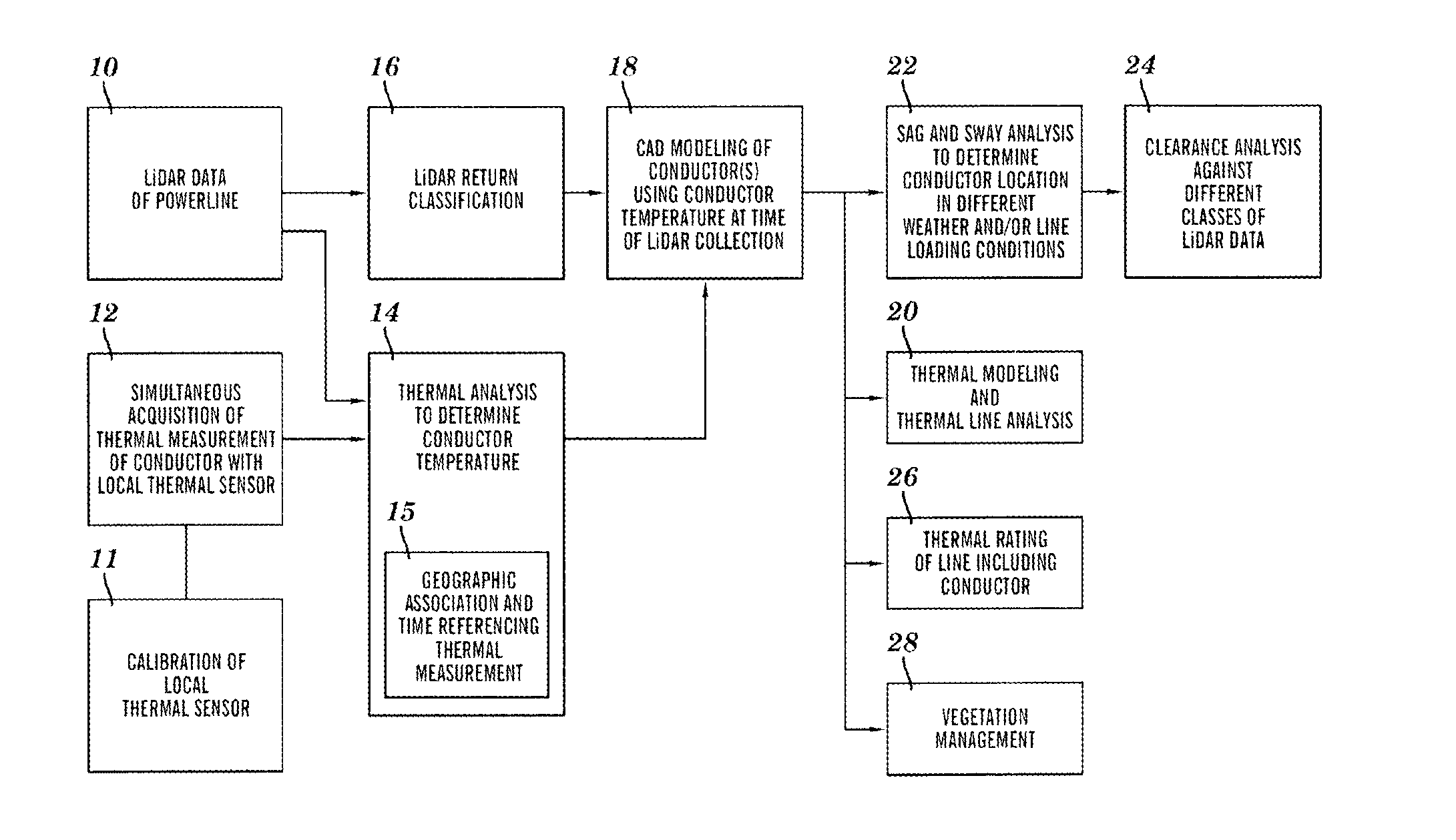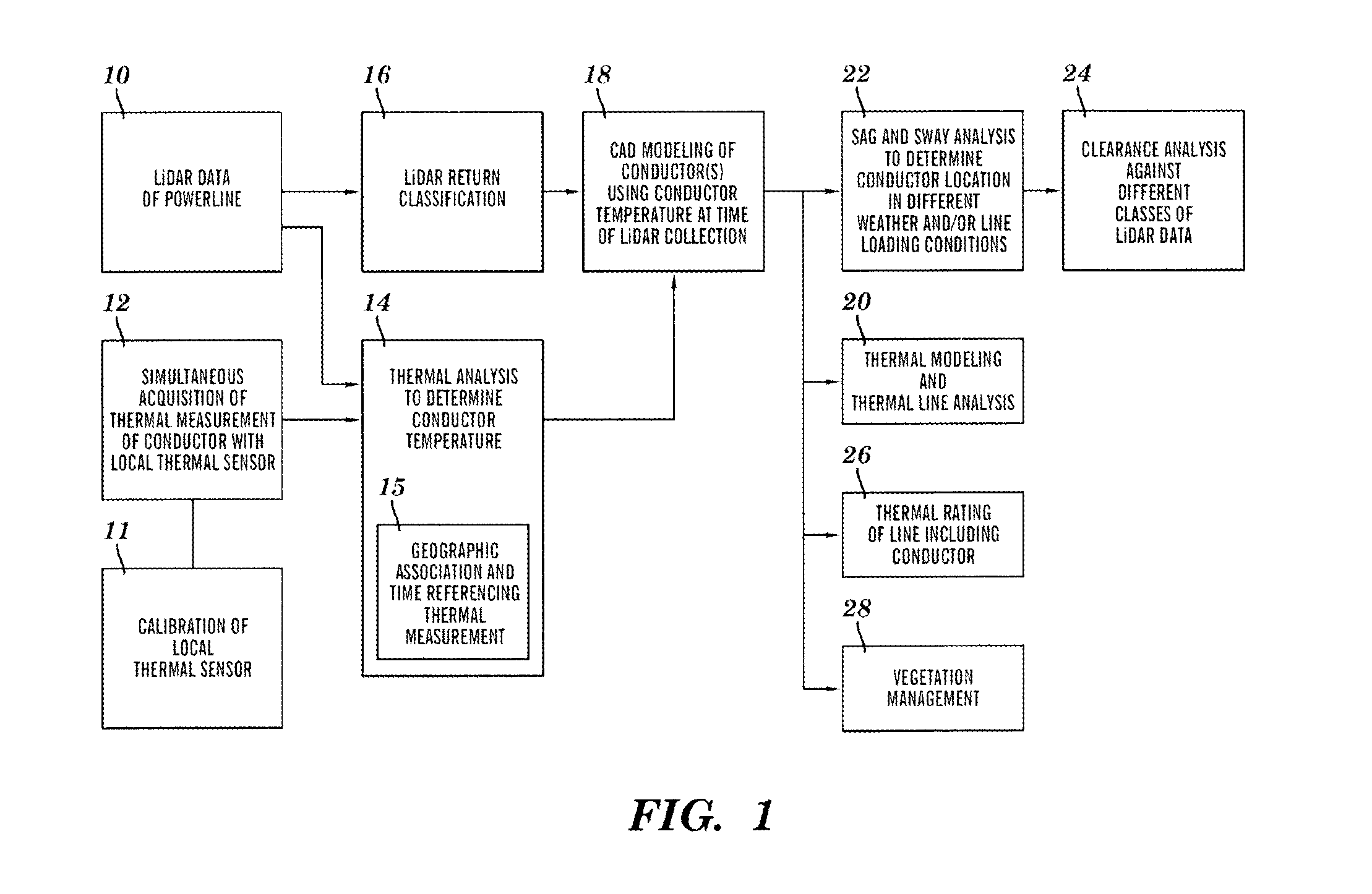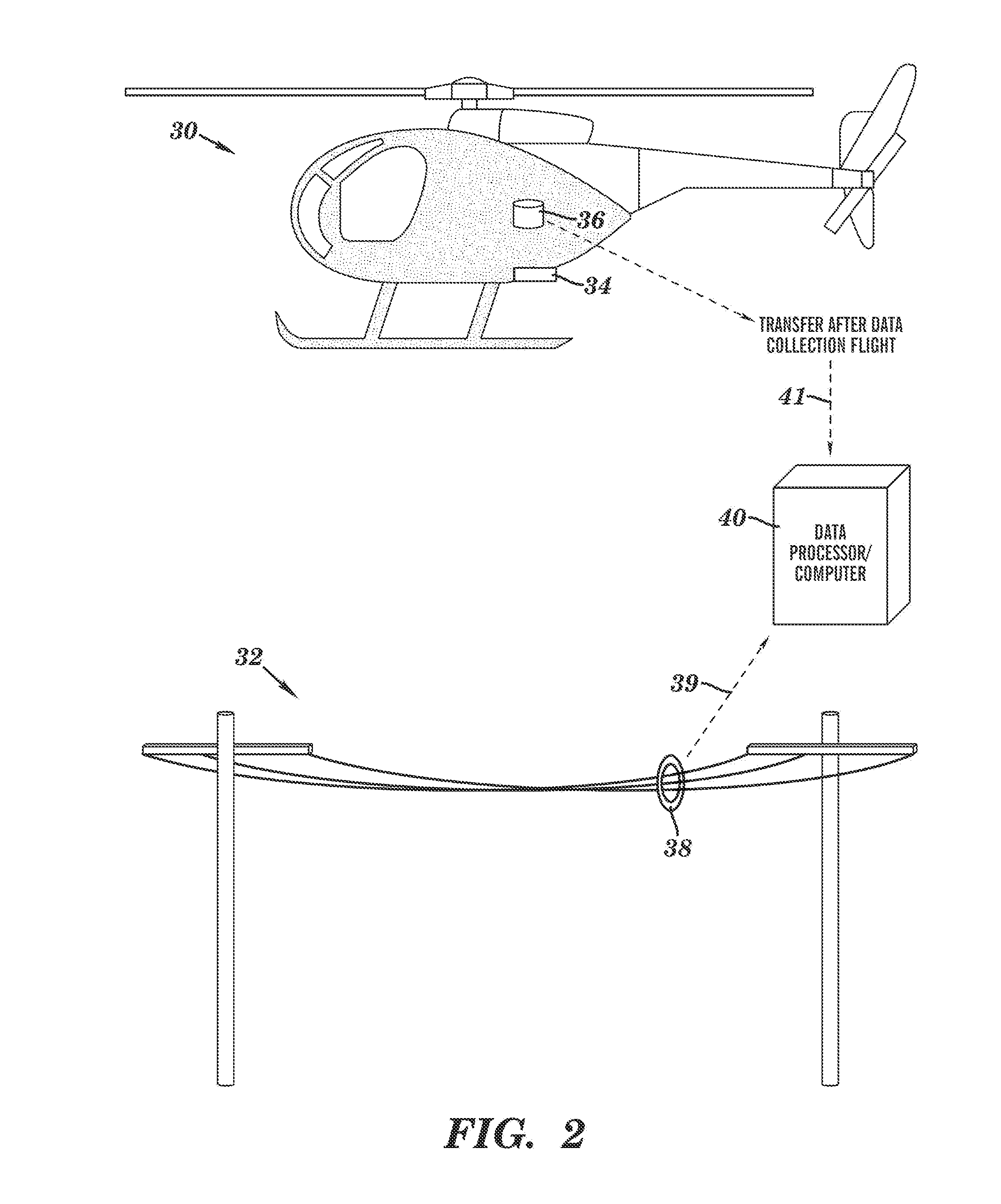Thermal powerline rating and clearance analysis using local thermal sensor
a technology of thermal sensor and thermal powerline, applied in the direction of heat measurement, speed/acceleration/shock measurement, instruments, etc., can solve the problems of direct limit of the capacity of the conductor, difficult to predict the speed and direction of the wind, and generate a significant margin of error
- Summary
- Abstract
- Description
- Claims
- Application Information
AI Technical Summary
Benefits of technology
Problems solved by technology
Method used
Image
Examples
Embodiment Construction
[0029]FIG. 1 provides an overview of a method for thermal line analysis of an overhead electrical conductor in accordance with the principles of the present invention. The method may include the following steps.
LiDAR Data Collection of a Powerline (10)
[0030]Collecting LiDAR data over a powerline is a process well known to the industry.
Optional Calibration of Local Thermal Sensor (11)
[0031]The local thermal sensor may optionally, but advantageously be precalibrated to cover an expected operational temperature range of the conductor, e.g. −50 degrees to 150 degrees or to 250 degrees Centigrade, using a blackbody or other known calibration process.
Simultaneous Acquisition of Thermal Measurement of the Conductor with Local Thermal Sensor (12)
[0032]Simultaneous acquisition of thermal measurement(s) of the conductor with a local thermal sensor may be accomplished employing the process and the equipment described in detail below.
Linking Local Thermal Sensor Measurement(s) to the Location a...
PUM
| Property | Measurement | Unit |
|---|---|---|
| temperature | aaaaa | aaaaa |
| operating temperature | aaaaa | aaaaa |
| operating temperature | aaaaa | aaaaa |
Abstract
Description
Claims
Application Information
 Login to View More
Login to View More - R&D
- Intellectual Property
- Life Sciences
- Materials
- Tech Scout
- Unparalleled Data Quality
- Higher Quality Content
- 60% Fewer Hallucinations
Browse by: Latest US Patents, China's latest patents, Technical Efficacy Thesaurus, Application Domain, Technology Topic, Popular Technical Reports.
© 2025 PatSnap. All rights reserved.Legal|Privacy policy|Modern Slavery Act Transparency Statement|Sitemap|About US| Contact US: help@patsnap.com



